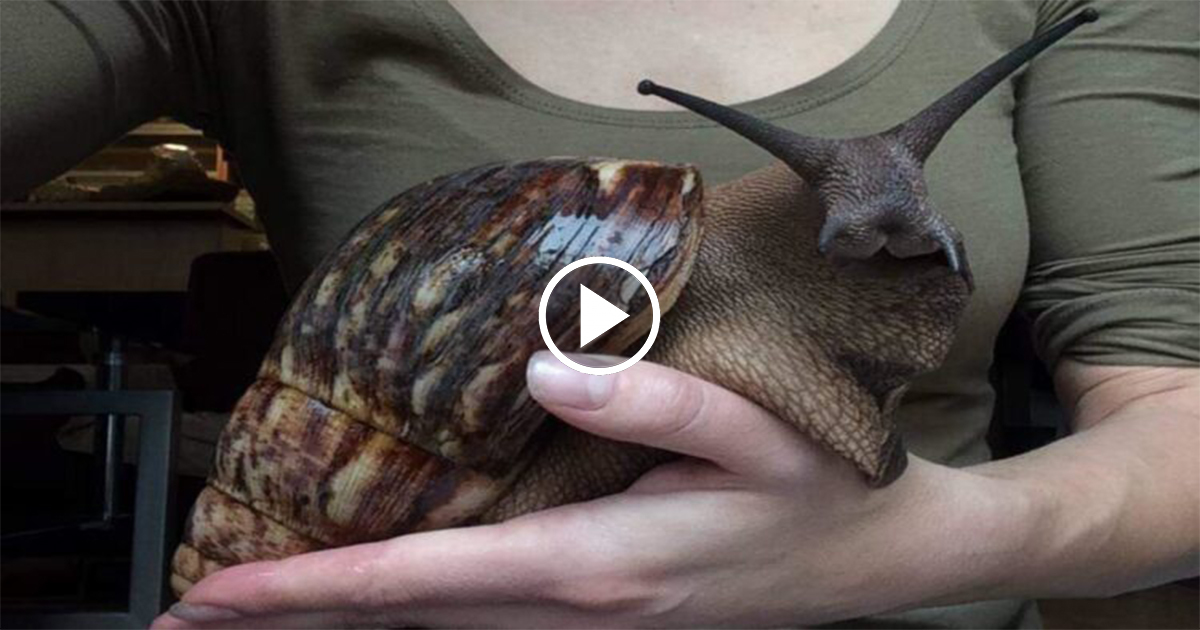The World’s Largest Snail Can Grow as Long as a Human Arm
This enormous snail is six times larger than a typical garden snail, and it has the potential to reach the length of a human arm, from hand to elbow!
This is no ordinary garden snail. Image credit: premedito
The Giant African Land Snail holds the title for being the largest land snail in the world (the common name refers to three giant species in the Achatinidae family: Achatina achatina, Archachatina marginata, and Lissachatina fulica).
These snails continue to grow even after reaching adulthood. While their growth rate may slow down at a certain age, they continue to increase in size until they die. Adult snails typically measure 2.8 inches (7 cm) in diameter and 7.9 inches (20 cm) in length, but some can grow even larger.
An XXXL specimen. Image credit: Romana Yates/exoticsnails.eu
The largest documented specimen was discovered during a snail expedition in Sierra Leone in 1976. When fully extended, it measured 1 foot and 3.5 inches (39.3 cm) in length, with a shell measuring 10.75 inches (27.3 cm). It was named Gee Geronimo and earned a place in the Guinness Book of World Records as the largest snail. However, the owner had to separate from it when their house became overwhelmed with snails, leading them to keep some of them in a container under their bed.
Each snail can live up to ten years and reproduces rapidly. Giant African Land Snails, like other land snails, are hermaphrodites, with adults capable of laying up to 1200 eggs annually.
These snails can live up to 9 years. Image credit: Plant pests and diseases
While originally native to East Africa, Giant African Snails can now be found worldwide. These colossal snails do not intentionally travel, but they have escaped or been transported to other countries through cargo ships, often as pets. Due to their ability to lay hundreds of eggs at once, they have rapidly spread in non-native regions.
These large snails thrive in humid woodland environments, but they can also adapt to coastal areas, rivers, scrublands, marshes, and even urban settings. They can tolerate cold temperatures during a semi-hibernation period.
Their diet consists of a wide variety of plants since they are herbivores. Biologists estimate that the Giant African Land Snail can consume over 500 different plant species. However, to strengthen their shells, they occasionally consume cement and bones for their high calcium content.
While keeping these gigantic snails as exotic pets is popular in some countries, they are considered invasive pests in most regions where they are found. Their presence poses a significant problem for farms due to their voracious appetite for various plants. Additionally, they can cause damage by nibbling off plaster and stucco from structures. Moreover, they can pose a health risk to humans by transmitting the rat lungworm parasite, which has been linked to meningitis.
Imports introduced the species to the United States in 1936. Initially intended for educational purposes and as pets, their population quickly spiraled out of control. They were eradicated twice in Florida, with the first campaign starting in the 1960s and lasting for ten years, costing one million dollars. They resurfaced in 2011 and underwent another eradication campaign, which concluded in 2021, with no confirmed sightings after 2017. Due to the threat they pose to agriculture and human health, Giant African Snails are prohibited from importation or ownership in the United States. However, they still pose a










